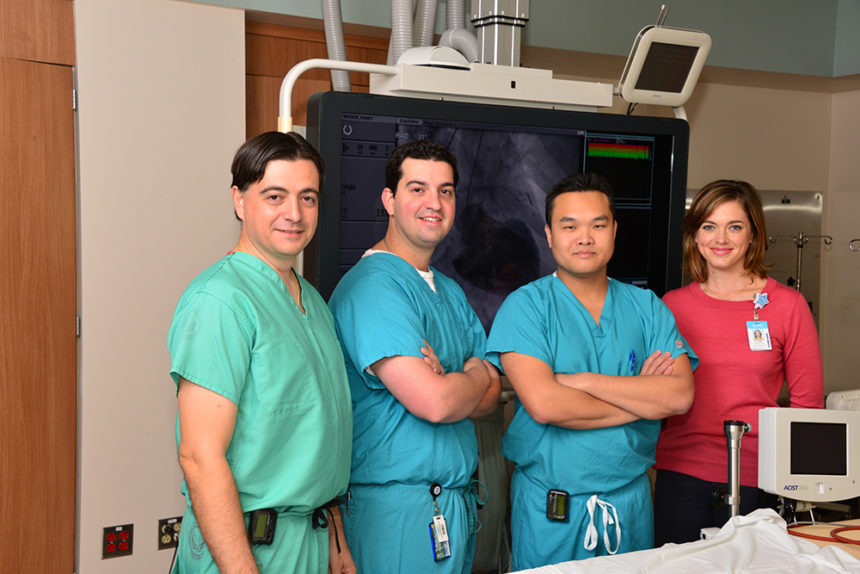“When we learned that this device was nearing approval, we obviously wanted to bring it to UNC as soon as possible. To be included in the first phase of the rollout is a great testament to our team and the confidence Medtronic has in our new program,” said John Vavalle, MD, assistant professor of Medicine in the Division of Cardiology.
TAVR provides a treatment option for aortic valve replacement for many patients who previously had no other options or were at high risk for conventional open heart surgery. With TAVR, physicians have the ability to provide aortic valve replacement via minimally-invasive approaches, providing outcomes that are just as good as, and sometimes better than, surgical valve replacements.
Vavalle called the new device a “game changer” that will open the procedure up to more patients and add an additional level of patient safety.
“The least invasive way to do TAVR is through the femoral arteries in the groin, but the patient’s arteries have to be large enough to accommodate the delivery sheaths,” Vavalle said. “Since this new delivery system is much smaller, the femoral approach will be available to more patients.”
Vavalle called the new device a “game changer” that will open the procedure up to more patients and add an additional level of patient safety.
In fact, the first patient who received the TAVR procedure with this new device would not have qualified for TAVR if UNC was not able to offer this new technology, and was previously turned away from two other experienced TAVR centers in the area.
But, Judith Merritt of Evergreen, North Carolina, was able to receive TAVR at UNC. Only hours after her procedure, she was up and walking around her hospital room, and was home from the hospital after only a few days.
“I really couldn’t ask for anything better than the care I received here at UNC,” Merritt said. “Without this I don’t know what I would have done.”
Vavalle said without TAVR Merritt would have required an open heart procedure, which would have presented tremendous risk and prolonged recovery for the 71-year-old.
“For her, this was a tremendous advantage,” Vavalle said. “This new technology made her a TAVR candidate at UNC, whereas previously it may have been too risky. She has done remarkably well.”
“Previously, you had one shot to get it right,” Caranasos said. “With this valve, you have the ability to recapture and reposition it, which adds a new level of safety to the procedure.”
Thomas Caranasos, MD, assistant professor of Cardiothoracic Surgery, another member of the TAVR team, added that this new device is also much safer due to the fact that the operators have the ability to recapture and reposition the valve once it has been deployed.
“Previously, you had one shot to get it right,” Caranasos said. “With this valve, you have the ability to recapture and reposition it, which adds a new level of safety to the procedure.”
The UNC TAVR team looks forward to continued success and rapid growth of their program, and are appreciative that both patients and developers of TAVR technology have already recognized UNC as a leader in the field.

